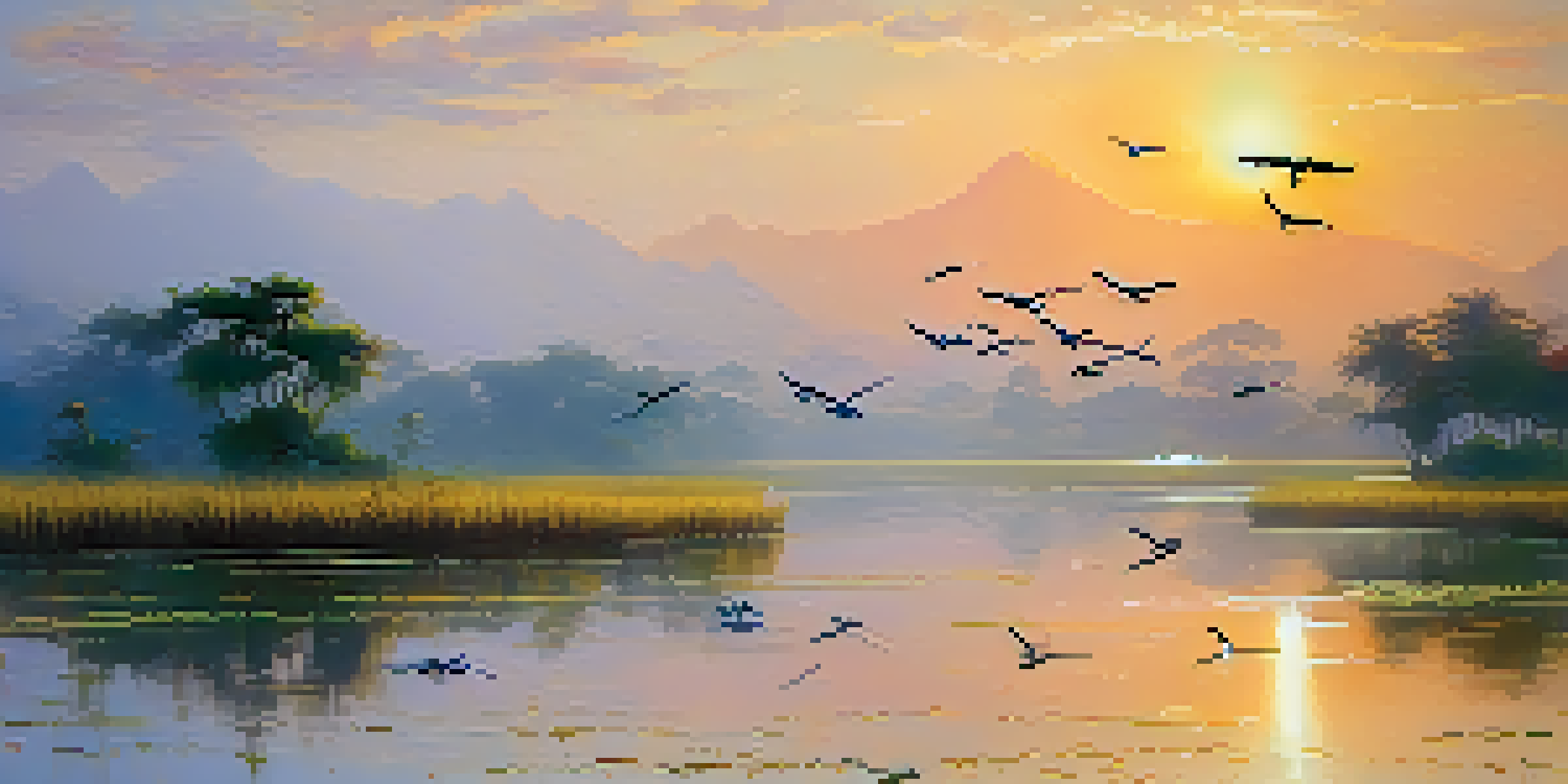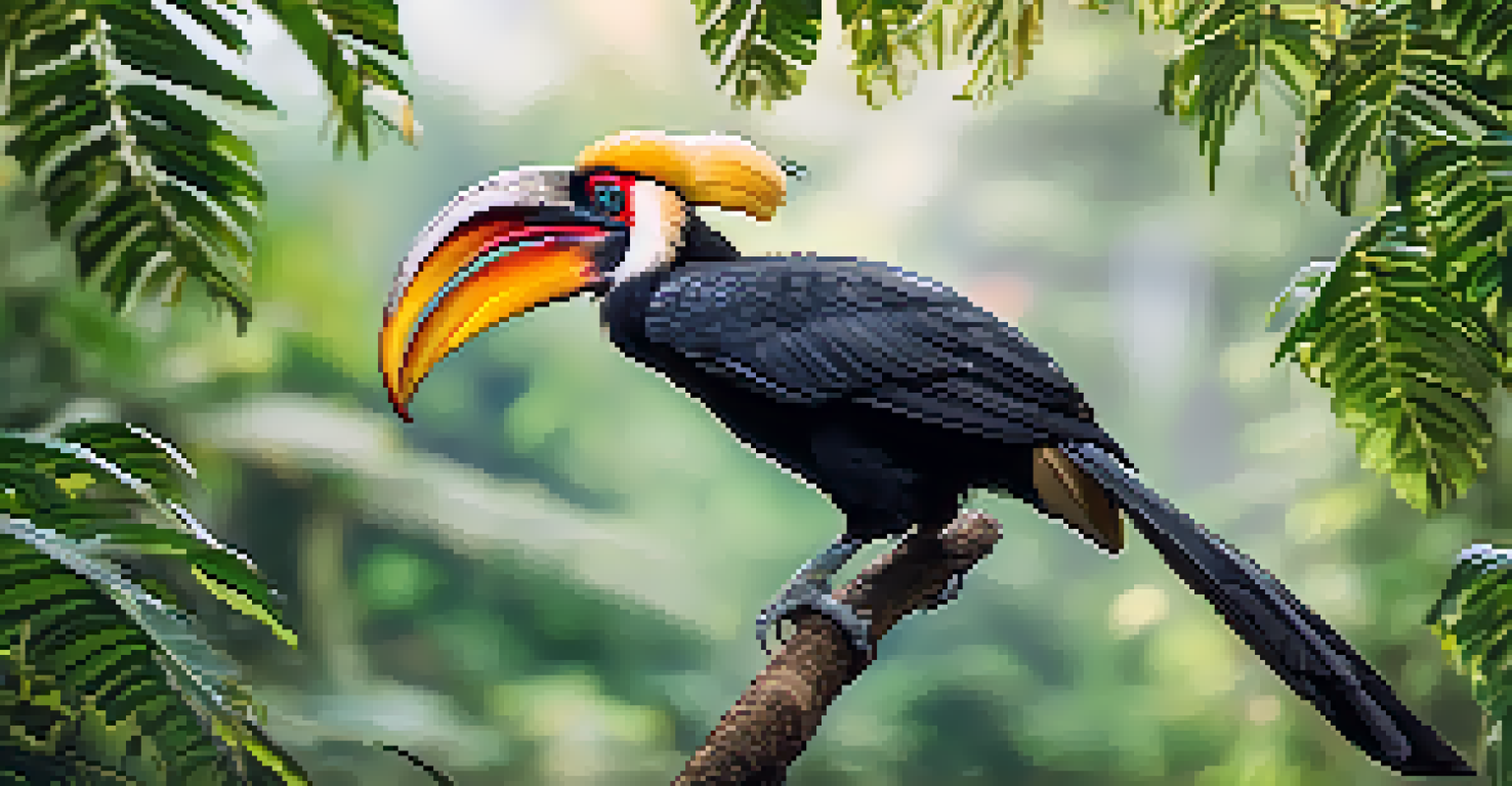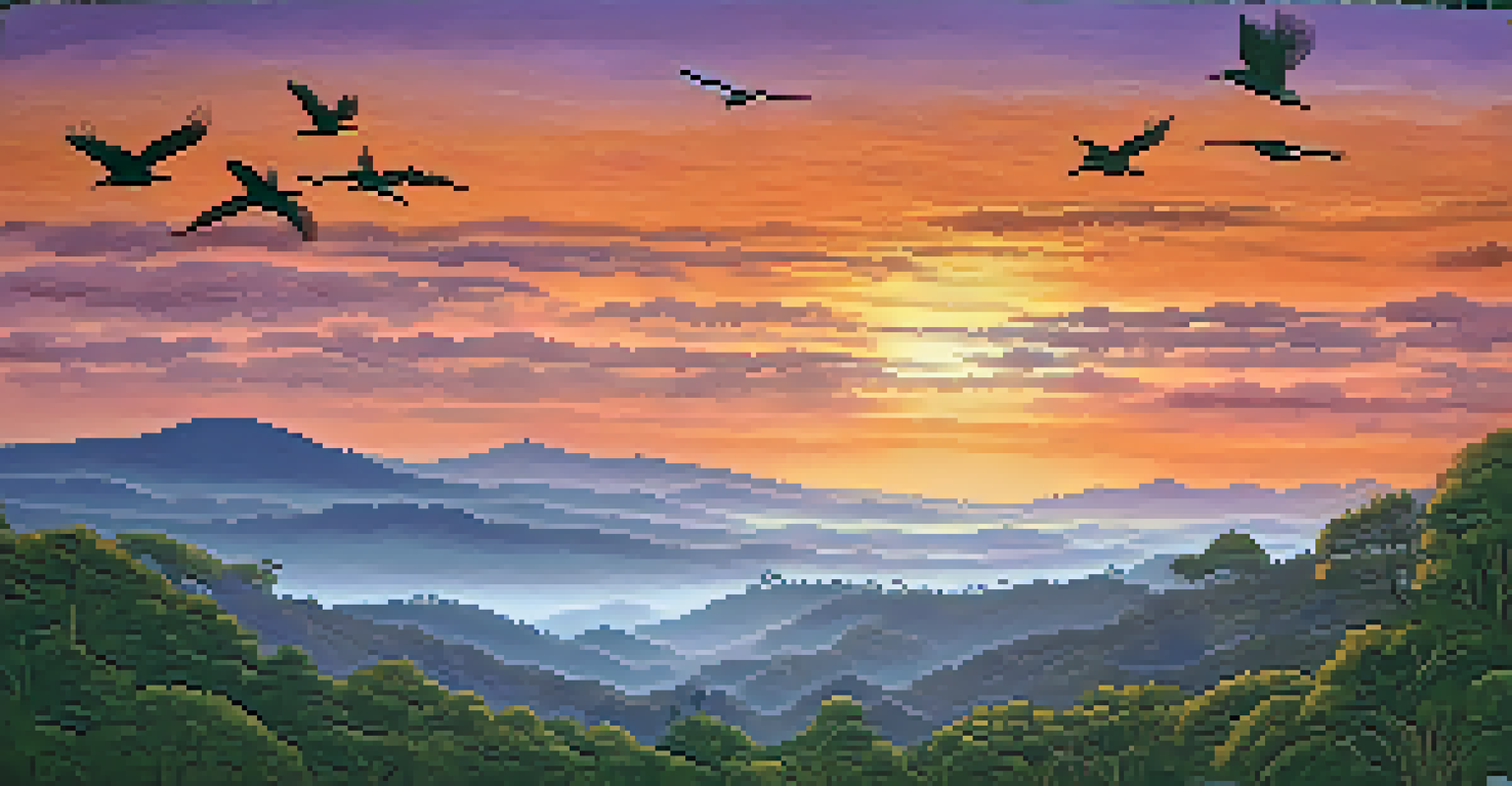Photographing Birds: Tips for Capturing Thailand's Species

Understanding Thailand's Bird Diversity
Thailand is home to over 1,000 bird species, making it a paradise for birdwatchers and photographers alike. From the majestic hornbills to the vibrant sunbirds, each species offers unique opportunities for stunning photographs. Understanding the types of birds you'll encounter can help you plan your photography outings effectively.
In every walk with nature one receives far more than he seeks.
Different regions of Thailand host different species, so knowing where to go can be key to your success. For example, the wetlands of the Central Plains attract migratory birds during the cooler months, while the mountainous areas in the north are known for their colorful residents. This diversity means you can capture an array of stunning images across various landscapes.
By familiarizing yourself with the local avifauna, you can also learn about their behavior and habits. This knowledge will help you anticipate their movements, allowing you to capture those perfect moments when they take flight or feed.
Best Locations for Bird Photography in Thailand
Choosing the right location can make all the difference in your bird photography experience. Some of the best spots include Khao Yai National Park, Doi Inthanon National Park, and the wetlands of Pak Thale. Each location boasts its own unique species and stunning backdrops, making them ideal for capturing breathtaking photos.

For instance, Khao Yai is famous for its hornbills and gibbons, while Doi Inthanon, the highest peak in Thailand, offers sightings of rare birds like the Himalayan bluetail. The diversity in habitats across these locations means you can find a variety of birds to photograph in just a single trip.
Explore Thailand's Bird Diversity
Thailand's diverse ecosystems host over 1,000 bird species, making it a prime location for birdwatching and photography.
Additionally, exploring local bird sanctuaries can provide excellent opportunities for close-up shots, as many birds are accustomed to humans. This allows you to capture their intricate details without disturbing their natural behaviors.
Essential Photography Gear for Birding
Having the right gear can significantly enhance your bird photography experience. A DSLR or mirrorless camera with a telephoto lens (at least 300mm) is ideal for capturing distant birds without disturbing them. This setup allows you to zoom in on details, such as the birds' vibrant feathers or unique markings.
Photography is the story I fail to put into words.
In addition to your camera and lens, consider using a tripod or monopod for stability, especially when shooting at slower shutter speeds. This can help reduce camera shake, ensuring your images are sharp and clear, even in low light conditions.
Don't forget to bring extra batteries and memory cards, as bird photography can often lead to extended shooting sessions. Being prepared will ensure you don’t miss any fleeting moments when a rare bird appears.
Understanding Bird Behavior for Better Shots
Patience and observation are key when photographing birds. By understanding their behavior, you can anticipate their movements and position yourself accordingly for the perfect shot. For example, many birds are more active during early morning or late afternoon, making these times ideal for photography.
Learning the typical behaviors of different species can also enhance your chances of capturing unique moments. For instance, some birds may engage in courtship displays or feed their young, providing opportunities for storytelling through your images.
Top Spots for Bird Photography
Key locations like Khao Yai and Doi Inthanon National Park offer unique species and stunning backdrops for photographers.
Moreover, remaining still and quiet allows you to blend into the environment, making it easier for birds to approach. This way, you can capture candid moments without startling them.
Utilizing Natural Light for Stunning Images
Lighting is a critical element in photography, and natural light can enhance the beauty of your bird images. The golden hour, just after sunrise or before sunset, provides soft, warm light that can make colors pop and create a dreamy atmosphere in your photos. This is often when birds are most active, giving you the best of both worlds.
Avoid harsh midday sunlight, which can cast unflattering shadows and wash out colors. If you do find yourself shooting during these hours, look for shaded areas or use fill flash to balance the lighting.
Experiment with backlighting to create silhouettes or emphasize feather details. By creatively using light, you can add depth and dimension to your bird photos.
Post-Processing Tips for Bird Photography
Once you've captured your images, post-processing can help enhance their quality. Software like Adobe Lightroom or Photoshop allows you to adjust exposure, contrast, and color balance, bringing out the best in your bird photographs. Simple tweaks can turn a good shot into a stunning one.
Cropping can also play a crucial role in emphasizing your subject. By removing distractions from the edges of the frame, you can draw the viewer's attention directly to the bird. Just be cautious not to crop too much, as this can reduce image quality.
Respect Wildlife While Shooting
Prioritizing the well-being of birds and their habitats is essential for responsible wildlife photography.
Lastly, consider adding a subtle vignette to focus the viewer’s eye towards the center of the image. With these post-processing techniques, your bird photos can truly shine.
Respecting Wildlife While Photographing Birds
As a photographer, it’s essential to prioritize the well-being of the birds and their habitats. Always maintain a respectful distance and avoid disturbing nesting sites or feeding areas. This not only protects the birds but also helps ensure that others can enjoy observing them in the wild.
Consider using camouflage or natural cover when approaching birds, as this minimizes your impact on their behavior. Remember, the goal is to capture their beauty without causing stress or harm.

Lastly, follow local regulations and guidelines for wildlife photography. By respecting these rules, you contribute to the preservation of Thailand's natural treasures for future generations to enjoy.